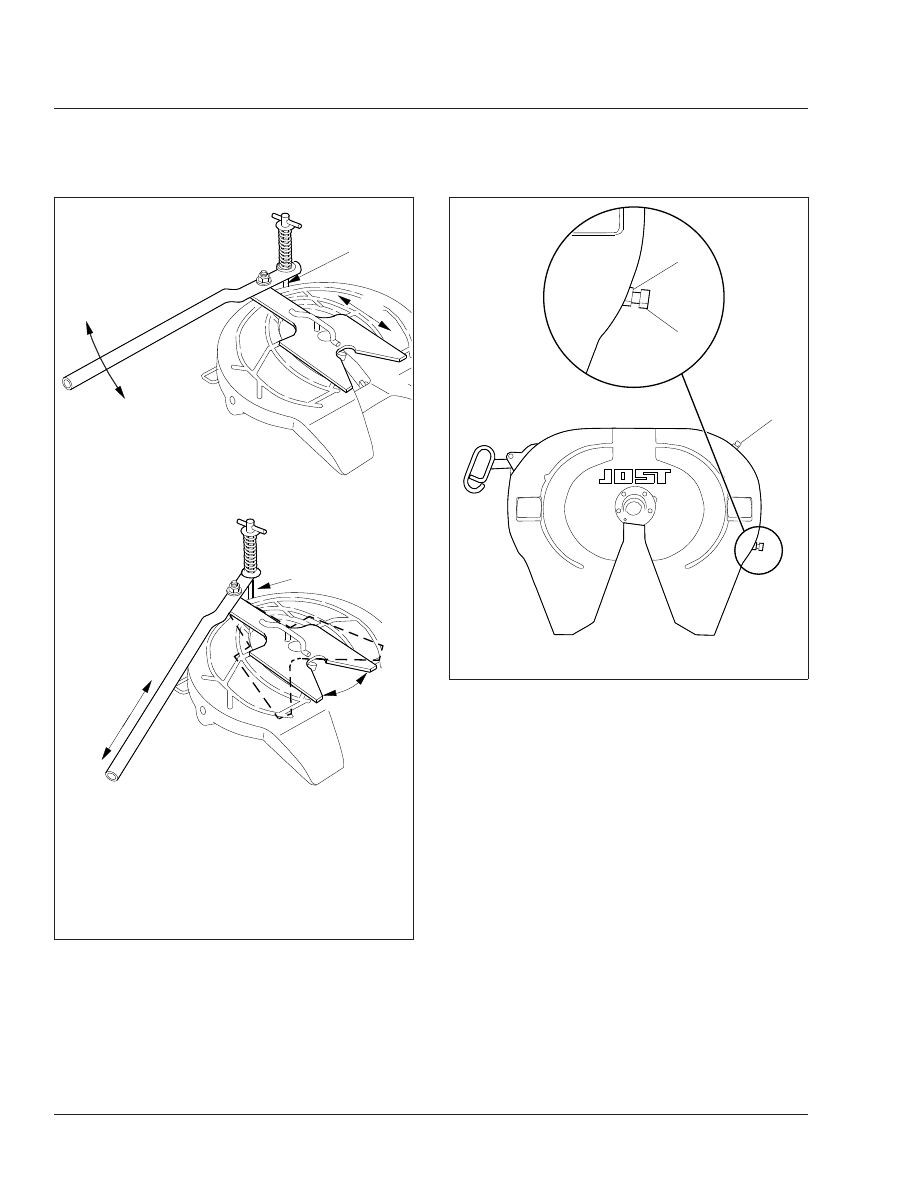Freightliner Century Class. Manual - part 16

9.3
Check the locking mechanism for proper
operation.
If the plungers will not release, check the
air cylinder or plunger adjustment.
If the plungers are loose, check the
plunger adjustment and the plunger
springs for proper compression. Replace
if needed.
9.4
The outboard slider assembly requires no
adjustment. If the plungers are loose, in-
spect and replace locking mechanism
parts as needed.
9.5
The inboard slider is adjustable for frame
width and plunger engagement. For ad-
justment, refer to the fifth wheel installa-
tion instructions.
10. Replace cracked, worn, or damaged parts with
new parts. Replace all loose mounting bolts with
5/8–11 SAE grade 8 bolts, grade C locknuts, and
hardened washers. Do not re-use bolts, nuts,
and washers on fifth wheel mountings.
11. After inspecting the fifth wheel, lubricate all mov-
ing parts with a chassis or multipurpose grease.
09/01/2009
f311099
A
B
C
D
E
F
G
H
A. Checking for fore/aft play
B. Rotating tester in lock
C. Engage hook
D. Pull/push handle fore/aft.
E. Check for movement of kingpin in lock
F.
Disengage hook
G. Push/pull handle inboard/outboard
H. Rotate lock tester
Fig. 9, Jost Fifth Wheel Adjustment
09/02/2009
3
1
2
f311100
1.
Jam Nut
2.
Adjustment Bolt
3.
Grease Zerk
Fig. 10, Jost Fifth Wheel
Frame and Frame Components
31
31/6